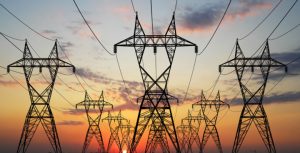

EARLY last year, Amalgamated Regional Trading Holdings (Art) outlined its plans to ramp up production and increase battery sales in the region as part of its regional expansion drive.
But during the quarter that ended December 31, 2022, the diversified group said the gains from the relative stability of exchange rates and easing of inflation in the last quarter of the 2022 financial year were reversed as electricity supply challenges worsened and seriously affected operations.
Power outages have been a quandary for most companies in the Sadc region, which are currently struggling with electricity generation shortfalls.
 Electricity generation in the region faces a number of challenges, including obsolete equipment and infrastructure, inability to attract significant private sector investment, and other financing instruments, as well as other structural bottlenecks, all of which have impacted on electricity supply, leading to load shedding.
Electricity generation in the region faces a number of challenges, including obsolete equipment and infrastructure, inability to attract significant private sector investment, and other financing instruments, as well as other structural bottlenecks, all of which have impacted on electricity supply, leading to load shedding.
Zimbabwe ― which implemented a 12-hour load shedding programme ― currently has a peak demand of 1 700 megawatts (MW) against a generating capacity of 1 300 MW, according to official figures.
Until recently, Zambia also had to implement a 12-hour electricity load-shedding schedule, which was later reduced to eight hours per day.
Early this year, Zambian authorities said households and companies countrywide will now enjoy 24 hours of power supply without any disruptions necessitated by various measures which include restoration and upgrading of power generation at various power stations in the country.
South Africa has also experienced rolling power cuts and has been implementing various stages of load-shedding over the past few months with as much as up to 24 000 MW of its 50 000 MW coal fleet out of action at times due to a combination of frequent breakdowns and planned maintenance.
As the region grapples with rolling power cuts, several countries have been leaning towards independent power producers (IPPs) to assist governments in meeting their renewable energy targets efficiently and cost-effectively.
But there is currently a lack of a competitive industry although Electricity Acts have been revised to allow for IPPs, the single buyer model whereby the utility is the buyer is still prevalent.

Zimbabwe ― which implemented a 12-hour load shedding programme ― currently has a peak demand of 1 700 megawatts (MW) against a generating capacity of 1 300 MW, according to official figures.
Economist Clemence Machadu said the current power shortages that are being experienced in the region and locally should signal authorities to seriously take concrete measures to foster energy initiatives of IPPs.
“Independent power projects can help reduce the growing energy deficit at a time when more intensive energy-consuming investments happening in the mining sector have increased the prevalence of load-shedding for households and other different sectors of the economy,” he said.
He noted that the prolonged incidences of interrupted power supply are increasing the cost of doing business, disrupting production, compromising competitiveness and also contributing to price increases.
“IPPs, therefore, play a vital role in ramping-up power generation capacity as they can bring in the required capital and speedily implement the power generation projects that can provide flexible power options that also enhance efficiency and competitiveness in domestic production,” Machadu said.
He highlighted that building and maintaining independent power plants requires high capital outlays, amongst other operating expenses.
“IPPs also assume a lot of risks to implement such huge investments, including borrowing foreign currency loans from abroad that need to be serviced timeously. Without a guaranteed return on investment and a favourable doing business environment, it’s difficult for IPPs to operate,” Machadu said.
He added that it is imperative for government to allow IPPs to charge tariffs that are viable and market-driven and also ensure that they can easily repatriate money outside the country.
“IPPs that focus on sustainable and renewable energy alternatives such as solar, wind and water should also be incentivised through tax holidays. Authorities should also work on removing bureaucracies and investment bottlenecks that frustrate IPP projects, which include rent-seeking tendencies such as demanding bribes, long approval processes and other hurdles,” he said.
“I also think that the local financial sector should partner with renewable energy companies to offer facilities for small investments in energy for companies and households at flexible and concessionary rates. Households, especially in low density areas, should also be required to have mandatory solar systems that meet their domestic energy requirements, to free up energy demand from conventional power sources.”
On his part, economic analyst Victor Bhoroma said there are no shortcuts to addressing current supply gaps.
“IPPs are key to addressing the energy deficit in the Sadc region. However, their contribution is hamstrung by lack of capital concerns, government subsidies on grid consumption, which make it cheaper than IPP feed-in in tariffs, and the low return on investments in some markets. Hence, national grid power remains the pivot to production in the short to medium term,” Bhoroma said.
“The most important aspect is to improve the ease of doing business, ensure currency stability, remove bureaucracy on licensing, and create a competitive market for power in the Sadc region where consumers can directly engage IPPs and agree on offtake tariffs that can unlock private capital.”
He noted that there is need for incentives to public-private partnerships in power generation as public finances are usually scarce and should not be squeezed into projects that are self-funded.
IPPs in Zimbabwe are currently contributing less than 1,5 percent of domestic generation, while in Zambia they contribute 20 percent to the national grid, Mozambique 35 percent, while some countries, such as Ireland, had 50 percent.
Finance minister Mthuli Ncube said IPPs’ energy projects continue to face viability problems owing to subprime tariff charges imposed by government, which keep stifling power generation projects in the country.
“Zimbabwe Energy Regulatory Authority has licensed more than 60 IPPs in the renewable energy space, with a capacity to generate 2 000 MW. However, offtake of the projects has been slow on account of viability issues,” Ncube said in the 2023 National Budget.
“With technical assistance from the African Legal Support Facility, the government, in consultation with the relevant stakeholders, is working on improving the bankability of IPP projects by addressing currency-related risks, which should accelerate the implementation of renewable energy projects in the country.”
Sadc says projects intended to address power shortages lag behind deadlines due to a lack of funding, slow migration to cost-reflective tariffs, inadequate project preparation, issues with power purchase agreements, and the absence of regulatory frameworks.
“Sustainable energy solutions are essential for southern Africa to achieve its aspirations for economic growth and development, and as the region industrialises, energy production and distribution will increase in importance,” Sadc said in its Energy Monitor.
Adequate power generation is critical for economic growth in the region. The African Development Bank says growth in the southern African region decelerated the most, to about 2,5 percent in 2022 from 4,3 percent in 2021, reflecting subdued growth in South Africa, as higher interest rates, weak domestic demand, and persistent power outages weighed on the economy.
newsdesk@fingaz.co.zw